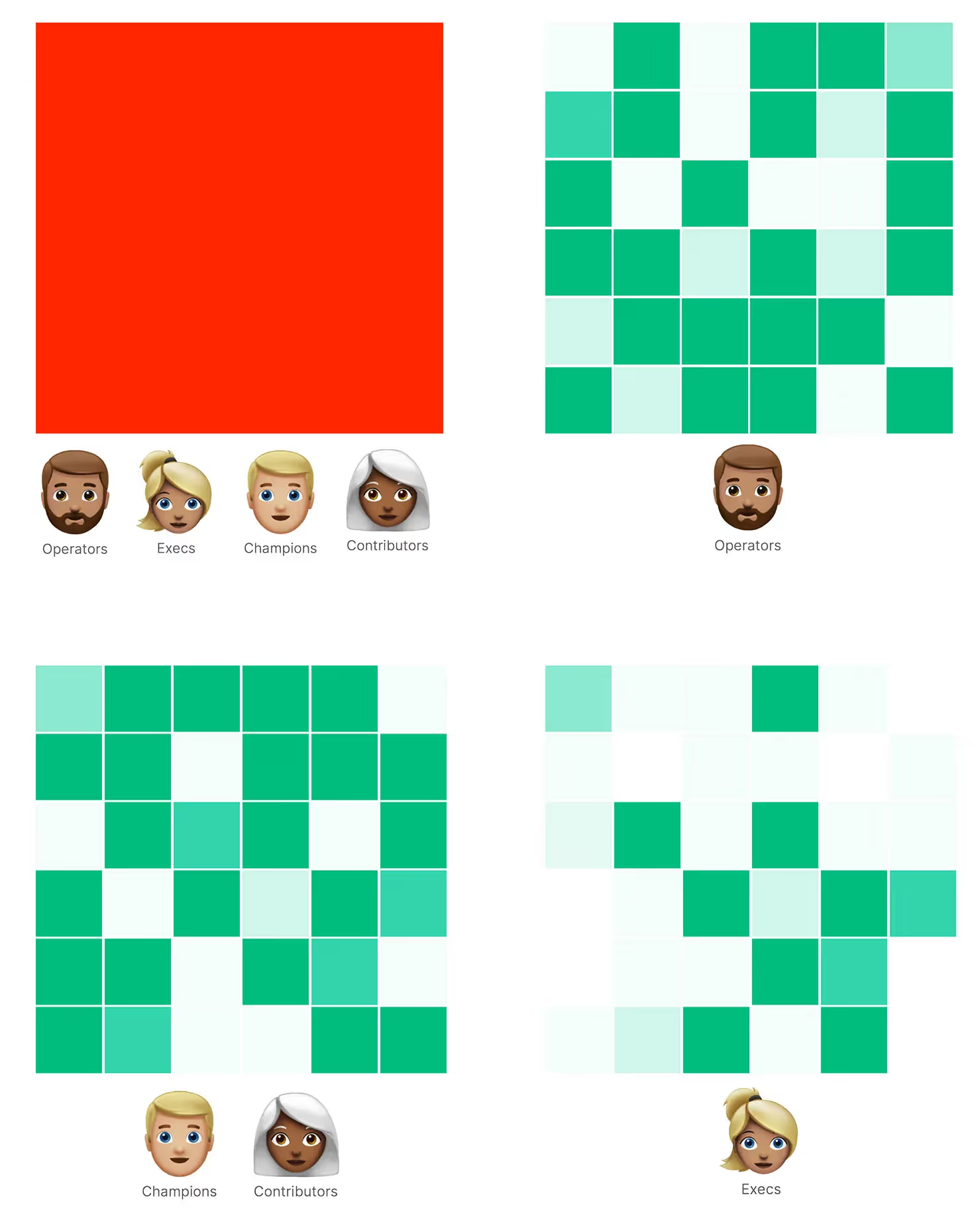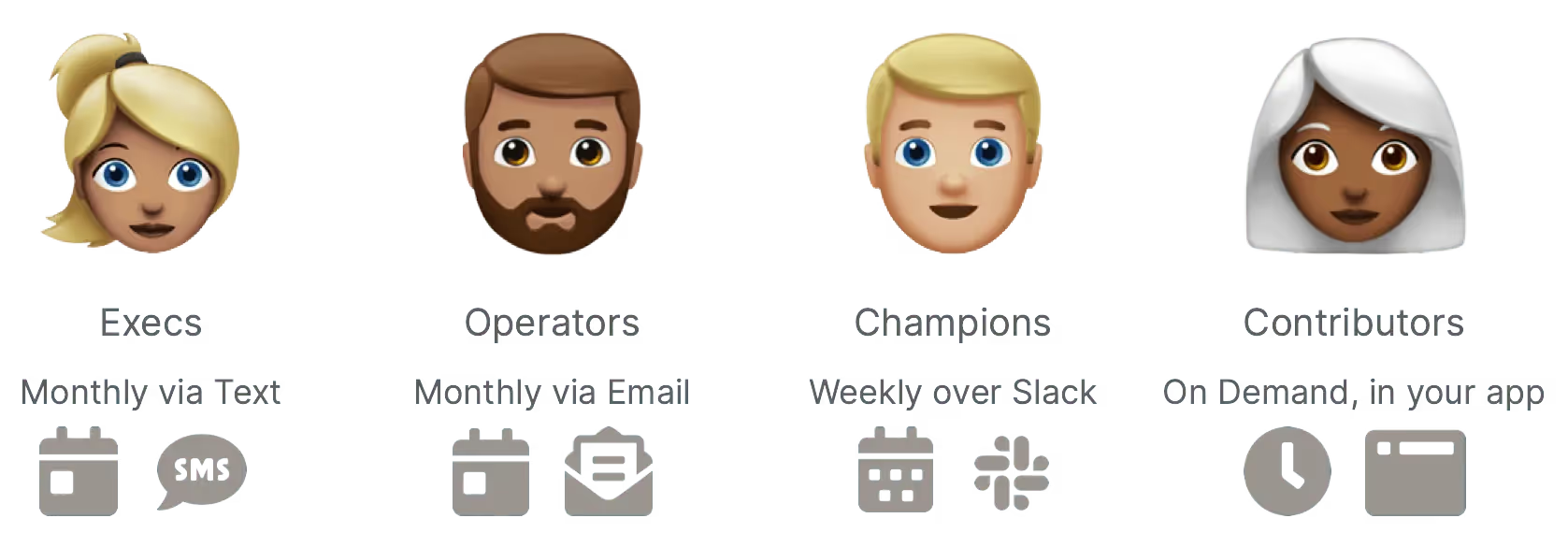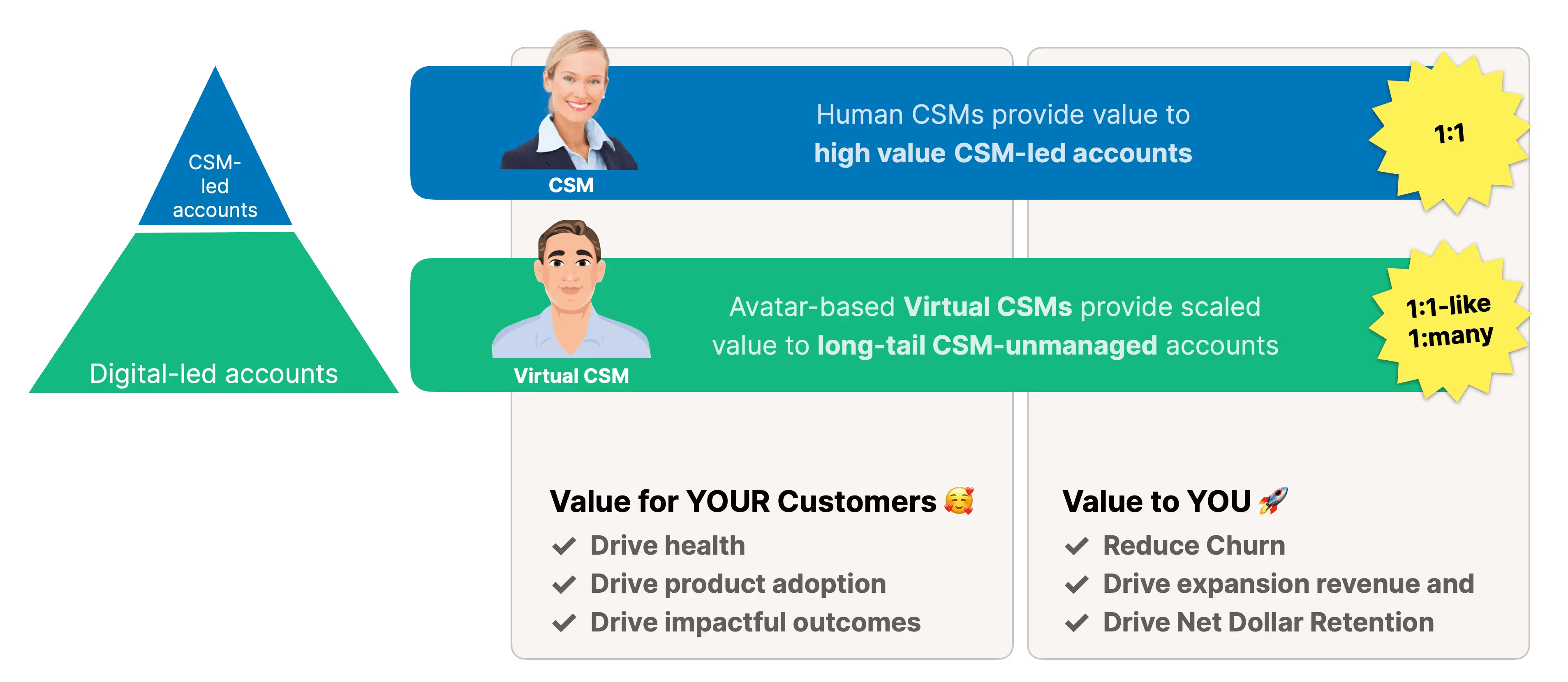Digitization of Quarterly Business Reviews (QBRs)
I was recently a guest for a podcast hosted by Anika Zubair, VP of Customer Success at Insided.com. We discussed several topics, including the difference between traditional Quarterly Business Reviews (QBRs) for stakeholders, Executive Business Reviews (EBRs) for the stakeholder's bosses, and Digital Business Reviews (DBRs).
You have heard of Digital Business Reviews in the context of providing continuous value to customers (instead of a quarterly or yearly snapshot) in B2B or SaaS companies, or Digital Value Statements in PLG or B2C companies.

You can see the blog post along with a link to the podcast on Insided's website.
I wanted to expand on the DBR versus QBR discussion further here.
What is a Digital Business Review?
A Digital Business Review is a digitally produced and distributed business review that automates its generation, presentation, and follow-ups.
- They are generated by sourcing data from several systems of record uniquely for each user at an account and distributed to users in-app and in-mobile-app, and economic buyers over email, text, or slack.
- They are presented digitally and meticulously explained by a Virtual CSM.
- They capture feedback, renewals, and expansion actions, recording them in the appropriate system of record.
DBRs are not limited to typical QBRs. They cover pre-boarding, onboarding, product adoption, retention, growth advice, expansion recommendations, advocacy, renewal capture, and several additional CSM-customer conversations.
QBRs versus the Digital Business Reviews
I am covering the most important differences between Digital Business Reviews and the traditional Quarterly Business Reviews here.
A table at the end of this article summarizes all the differences, including the select few described below.
Change of focus from an account to a user
A CSM presents the same QBR to everyone at a CSM-led account. Strategic content, i.e., past quarter achievements, next-quarter goals, and the action plan to achieve the outlined goals, are usually accompanied by tactical content, i.e., support tickets review, customer health review, benchmarking, product use, etc.
Digital Business Reviews (DBRs) change the focus from an account to each user at the customer account.
Why is that important?
The users at an account indeed have several common goals. But every user at a customer account is different and has different needs.
Every user has a different expectation from a product and area of focus — from the C-level exec to the operator, individual contributor, and intern. For example, a C-level exec may be interested in the difference between different lines of business. A VP or Director focused on the difference between the commercial and enterprise segments for a specific business or benchmarking insights. An individual contributor may be concentrating on the comparisons between two cohorts or segments.
Digital Business Reviews, by definition, are digitally created, and therefore you can afford to help each user individually. As a result, you can provide direct value by serving each user and increasing product stickiness, adoption, derived value, and recommended actions. For instance, you can provide 2-3 relevant recommendations to each user instead of overwhelming the account with 20 suggestions, with several of them meaningless to many users.
Provide direct value by serving each user and increasing product stickiness, adoption, derived value, and recommended actions.

User Success is the new Customer Success.
What about free and freemium users?
Would you assign a CSM to a free account?
Imagine the lift in conversion rate from free to paid accounts if you could assign CSMs to the free accounts.
Offering Digital Business Reviews to free and freemium users is powerful, cost-effective, and has a top-notch return on investment.
Imagine what paying attention to your free users would do to your flywheel?
Why is this important? With product-led-growth go-to-market models, you find leads in your product. They are typically called product qualified leads or PQLs. Showing the value of your product to free users can accelerate conversion and adoption.
Relevancy, Relevancy, Relevancy
Providing relevant insights, recommendations, and low-friction actions, is the "Location, Location, Location" of Digital Business Reviews.
A CSM provides insights and recommendations to an account and communicates them during a QBR. However, in a Digital Business Review, we can provide recommendations based on where each user is in their journey with your product.
Since we provide relevant recommendations to each user in a DBR, we can save a user significant time and increase their time-to-value and time to product adoption.
Read how to build Build Your First Effective Digital Customer Success Program.
Before and After a QBR
Although a QBR includes the presentation made to a customer, do not underestimate what a CSM does before and after a formal QBR presentation.
In other words, CSMs put in a lot of work for the QBR to be effective and not just a check-mark process.
Before the QBR, a CSM typically runs reports on 3-6 systems of record products, collects insights, puts them in a PowerPoint, Apple Keynote, or Google Sheets template. They collect data from CRMs, Customer Success platforms, Case Management Systems, Customer Satisfaction or Advocacy systems, Data warehouses, Product Analytics systems, etc.
After the QBR, a CSM typically enters up-sells, cross-sells, renewals, add-ons in CRM and CS platforms. They may also need to record additional items in various systems of record.

DBRs automate the repeatable work before, during, and after a business review.
In the case of a Digital Business Review, a Virtual CSM automates everything a CSM does before, during, and after a QBR. The only difference is DBRs are for the long tail CSM unmanaged accounts.
So the amount of time a CSM would spend, for example, three to eight hours, creating one QBR for one customer in one quarter, you can create Digital Business Reviews for every customer account in a perpetual manner. And these are always up-to-date.
And yes, you may want to change these from time to time, for example, to incorporate a new product or a new feature, but the change would apply to all the accounts that get the DBR based on the conditional logic you provide.

Length, Frequency, and Consumption
Traditional QBRs are 45 minutes long, and unmistakably, they are once a quarter, and then we hear several conflicting things like,
"Oh, the QBR is too long..."
"QBRs are too infrequent at once a quarter..."
"We can't afford to do QBRs every quarter — we do them once a year. We call them EBRs."
"We do MBRs for at-risk or executive-sponsored customers"
"We only do QBRs when a customer pays for Customer Success!"
Imagine congratulating a customer three months later for a record monthly NDR?
Digital business reviews, on the other hand, are much shorter. They're three or four minutes.
They're hyper-relevant. Hyper-relevant to each user.
Your users at an account can consume them asynchronously. You don't have to set up a meeting to get the people in the same room.
And a lot of times, when you invite a C-level person, they don't even show up. So you end up talking to the champion again.
The cadence of a DBR can be custom to each user's role, interest, and preference. So you can reach out to the champions weekly, the operators every month, maybe the C-level executive quarterly. And the individual contributors can look at this digital business review on-demand — for instance, every time they log in to your product. Or whenever they feel like learning more, they go into your product and click on a button to access an always up-to-date DBR.

Imagine an up-to-date on-demand DBR.
Yes, that is possible with a Digital Business Review.
In a Digital Business Review, you give recommendations based on the health scores, product analytics, behavioral usage, and utilization. You can have a rules-based system or machine-learning system to come up with recommendations. Most customers end up using a combination of machine learning and a rules-based approach.
Scheduled vs. Triggered
QBRs are planned and scheduled. DBRs can also be generated based on a triggering of an anomaly; for example, customer health index changes from green to yellow for a specific feature or product.
Explaining QBRS and DBRs
Part of the reason QBRs are successful is that they are thoughtfully explained by a CSM. DBRs similarly are meticulously explained by a Virtual CSM who in addition also automates what CSMs do before and after the presentation:
- collect the material needed to present (insights and recommendations)
- contextualize, explain, and recommend actions to each user individually
- convince users to take action urgently using benchmarking, comparisons, and gamification techniques
- capture actions, feedback, and sales leads within Cast Video Presentations
Value — QBR and DBR provide similar value but to different segments
QBRs created by a CSM and a DBR generated automatically provide similar value but to different customer segments.
Human CSMs provide value to high-value CSM-led accounts.
DBRs provide scaled value to the long tail to CSM-unmanaged accounts.

Value for your customers: drive health, product adoption, and impactful outcomes.
Value for you: reduce churn and drive expansion revenue and higher Net Dollar Retention.
Helping CSMs with QBRs
We keep saying that DBRs make sense for the long tail of CSM-unmanaged accounts. However, we found that if a CSM manages more than 25 accounts, they need some automation to be practical and sane.
In the podcast, I picked 60 accounts per CSM to make this point. So if a CSM works five days a week and manages 60 accounts, that is all they will do in the entire quarter — generate QBRs. Is this the best use of their time?
Cast offers Virtual CSMs that automate the "before, during, and after" process of creating a QBR.
Our customers have found ways to get value for high-touch accounts too. For example, they use our product to generate a DBR, extract the talking points and slides they want to use, and present themselves.
In other words, developing DBRs helps them become productive while automating for the CSM-unmanaged accounts.
Summary
Here is a summary of the differences between a traditional Quarterly Business Review and an automated Digital Business Review. Is there anything else you would like me to add? Contact me at dickey at cast dot app.
What is Cast?
Cast scales Customer Success and Post Sales using automation and virtual CSMs. Cast is the second best solution to drive adoption, reduce churn, expand revenue, and NDR for accounts at scale — second only to human CSMs.